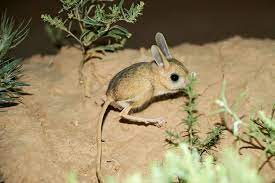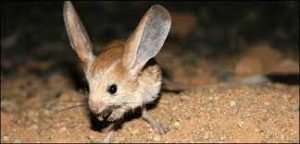In the arid landscapes of Egypt, the Egyptian Jerboa emerges as a captivating and unique creature. Join us on a journey as we delve into 41 fascinating facts that shed light on the behaviors, adaptations, and ecological significance of this enigmatic rodent, uncovering the secrets behind its remarkable jumping abilities and its role in the delicate desert ecosystems of its homeland.
1. Desert Dwelling: The Egyptian Jerboa, also known as the Greater Egyptian Jerboa, is an inhabitant of the desert.
2. Unique Adaptations: This rodent boasts long hind legs and a long tail, which aid in jumping and balance.
3. Jumping Mastery: The Egyptian Jerboa can jump up to 3 feet in a single leap, covering distances efficiently.
4. Nocturnal Lifestyle: These creatures are primarily active during the night to avoid the scorching desert sun.
5. Herbivorous Diet: Egyptian Jerboas feed on seeds, plants, and occasionally insects.
6. Water Conservation: Jerboas have specialized kidneys that allow them to extract water efficiently from their diet.
7. Temperature Tolerance: They can withstand extreme temperature fluctuations in desert environments.
8. Burrowing Experts: Egyptian Jerboas create intricate burrows to escape predators and regulate temperature.
9. Complex Tunnels: Burrows often include multiple chambers for different activities, such as nesting and food storage.
10. Social Interactions: Some evidence suggests that these rodents communicate through vocalizations and scent markings.
11. Reproductive Strategies: Females give birth to litters of several pups, which they nurse in the safety of their burrows.
12. Longevity: In the wild, Egyptian Jerboas typically live for about 2 to 3 years.
13. Solitary Lives: These rodents are generally solitary, coming together primarily for breeding.
14. Predation Challenges: Jerboas face threats from predators such as snakes, owls, and desert foxes.
15. Tail Functionality: Their tails serve as a balance mechanism during jumps and as a tool for communication.
16. Ecosystem Importance: Egyptian Jerboas play a role in seed dispersal and controlling insect populations.
17. Sand Dune Habitats: They are often found in sandy desert areas, using their burrows to stay cool.
18. Camouflage Mastery: Their fur coloration helps them blend seamlessly with their desert surroundings.
19. Jumping Mechanics: Powerful hind legs and a unique bone structure enable their impressive jumps.
20. Adaptable Diet: In times of scarcity, they can survive on a diet of succulent plant parts.
21. Desert Survival: Egyptian Jerboas have evolved to thrive in one of Earth’s harshest environments.
22. Stash and Cache: They store food in their burrows for times when resources are scarce.
23. Anthropogenic Impact: Habitat destruction and human activity pose threats to their desert homes.
24. Cultural Significance: Jerboas are part of the desert ecosystem that has shaped the region’s culture.
25. Keystone Species: The presence of Egyptian Jerboas affects the entire desert food web.
26. Taxonomic Diversity: The Egyptian Jerboa belongs to the family Dipodidae, which includes other jerboa species.
27. Silent Movements: They move noiselessly through the desert, relying on their keen senses.
28. Desert Ecosystem Balance: Egyptian Jerboas contribute to maintaining a delicate equilibrium in arid environments.
29. Captivating Behavior: Observing their jumping and burrowing activities is a unique sight.
30. Energetic Efficiency: Their jumping ability conserves energy while navigating expansive desert terrains.
31. Research Challenges: Studying Egyptian Jerboas in their natural habitat can be challenging due to their nocturnal habits.
32. Conservation Efforts: Protecting desert habitats benefits not only Egyptian Jerboas but also other species.
33. Natural Pest Control: Their consumption of insects can aid in controlling potential pest populations.
34. Evolutionary Marvels: Egyptian Jerboas’ adaptations showcase the wonders of natural selection.
35. Desert Aesthetics: These rodents contribute to the charm and allure of desert landscapes.
36. Desert Nomads: Jerboas’ mobility allows them to traverse arid expanses in search of resources.
37. Desert Survival Techniques: Their specialized adaptations are a testament to nature’s ingenuity.
38. Eco-Tourism Potential: Observing these creatures in their native habitat could attract ecotourists.
39. Dune Habitat Resilience: They contribute to stabilizing desert sands and preventing erosion.
40. Vibrant Desert Nights: The movements of these nocturnal creatures add life to the otherwise quiet desert nights.
41. Vital Desert Inhabitants: Egyptian Jerboas contribute to the ecological diversity of desert ecosystems.
Embark on a journey into the captivating world of the Egyptian Jerboa, an agile and charming desert dweller that thrives in the arid landscapes, adding an element of mystery and grace to the desert’s intricate tapestry.




















Add Comment